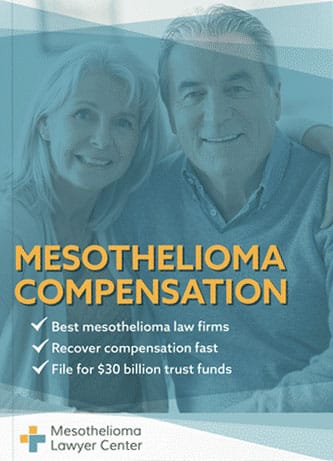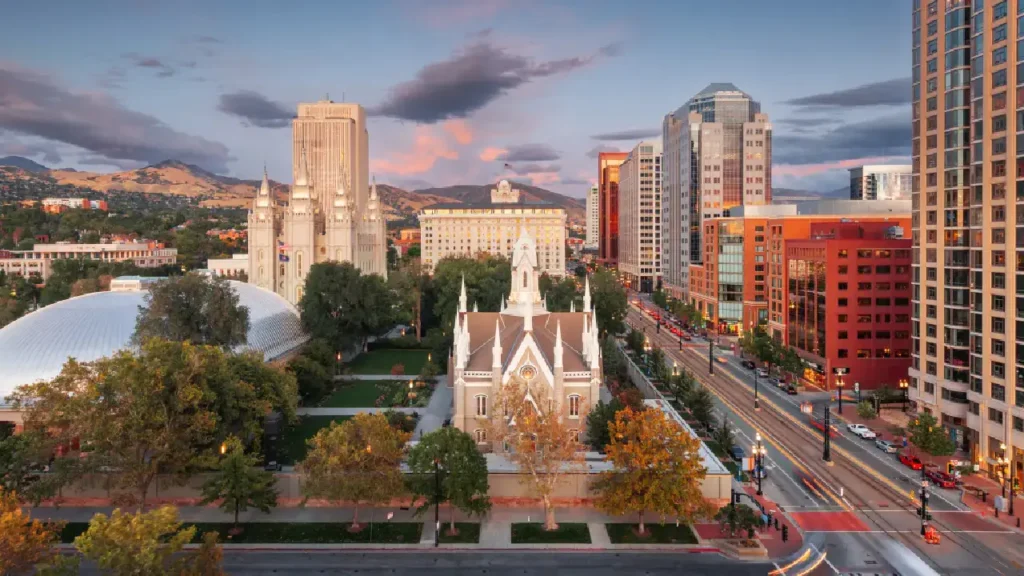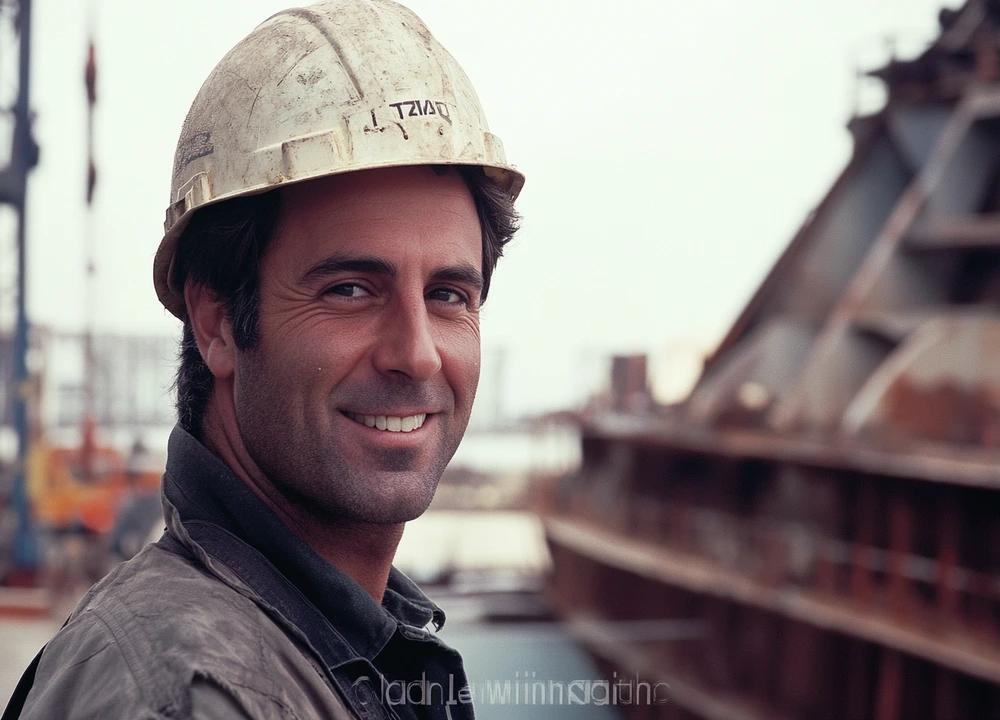Contact a Salt Lake City mesothelioma lawyer to learn about your legal options if you worked with or around asbestos. Salt Lake City depended on industries with extensive asbestos use throughout much of its history. Several companies and workplaces exposed workers and put them at risk for mesothelioma.
If you or a loved one has mesothelioma, asbestos-related lung cancer, or asbestosis, you may be eligible for a large amount of compensation. Currently, there is over $30 billion in asbestos trust funds set up for those who have been diagnosed with an asbestos-related illness. We invite you to fill out our form today for a free Financial Compensation Packet, filled with information about experienced mesothelioma lawyers in Salt Lake City, how to get paid in 90 days, how to file an asbestos trust fund claim, and much more.


FREE Financial Compensation Packet
- Info on law firms that will recover your HIGHEST COMPENSATION
- Learn how to get paid in 90 days
- File for your share of $30 billion in trust funds
What is the Average Payout for Mesothelioma Victims in Salt Lake City?
Determining an exact average payout for mesothelioma victims in Salt Lake City is challenging. Payouts can vary significantly based on a variety of factors:
- Evidence and Case Strength: The compensation largely depends on the strength of the evidence presented against asbestos companies in legal proceedings. Stronger evidence may lead to higher compensation.
- Involvement of Trust Funds: Some victims may receive payouts through asbestos trust funds. These are established to compensate people harmed by companies that have declared bankruptcy. The amount from these funds can differ depending on the specific trust’s guidelines and financial health.
- Nature of Settlements or Verdicts: In some cases, victims may receive settlements outside of court, while others might get awarded through trials. Settlements are often influenced by the negotiation skills of the attorneys and the willingness of companies to offer fair compensation.
- Victim’s Specific Circumstances: The age, lost income, medical expenses, and suffering endured by the victim also play crucial roles in determining compensation.
Given these variables, the compensation for mesothelioma victims can range from thousands to millions of dollars. Each case is unique, and consulting with a specialized attorney can provide more personalized estimates and guidance.
Salt Lake City Asbestos Facts

- Salt Lake City had the highest number of asbestos-related deaths in Utah between 1999 and 2017, with 559.
- Early industries in the region, including railroads and mining, contributed to asbestos exposure.
- Other industries that used asbestos and put Salt Lake City workers at risk of exposure include construction and automotive.
About Mesothelioma and Asbestos
Mesothelioma is a rare, aggressive cancer. The only known cause of mesothelioma is asbestos exposure. Asbestos is a natural, fibrous material. It readily sheds small fibers, especially when handled, and those fibers enter the dust in the air and on surfaces.
Anyone around asbestos that is shedding fibers can inhale or ingest them if not wearing appropriate safety gear. Inside the body, the fibers cause tissue and cell damage. This damage causes illnesses in some people years later. Asbestos exposure can cause:
Pleural mesothelioma develops in the chest cavity and causes coughing, shortness of breath, and chest pains. Peritoneal mesothelioma affects the abdomen, causing gastrointestinal symptoms and abdominal pain and swelling.
Pleural mesothelioma is more common than the peritoneal type because it is easy to inhale asbestos fibers. Most people do not receive a diagnosis of mesothelioma until decades after asbestos exposure.
Understanding the Statute of Limitations for Asbestos Claims in Salt Lake City
In Salt Lake City, the statute of limitations for filing asbestos-related claims, such as those for personal injury or wrongful death, is crucial to keep in mind. Here’s what you need to know:
- Personal Injury Claims: If you’ve been diagnosed with an asbestos-related illness, you have four years from the date of diagnosis to file a personal injury claim. This time frame ensures individuals have a reasonable period to pursue legal action once they become aware of their condition.
- Wrongful Death Claims: In the unfortunate event of a death caused by asbestos exposure, the statute of limitations is two years from the date of death. This allows the deceased’s family members to seek justice and compensation for their loss.
Remember that adhering to these deadlines is essential. If you fail to file within the specified time, you might lose the right to pursue compensation for your injuries or your loved one’s death. Always consult with a qualified attorney to fully understand how these laws apply to your specific situation and explore all available legal avenues.
Who Is at Risk for Mesothelioma?
Most asbestos exposure occurs in the workplace and was more prevalent in the past. Some of the industries with the highest rates of exposure and illness include:
- Construction
- Demolition and renovation
- Shipbuilding
- Automotive
- Railroad
- Military
- Mining
Why Do I Need an Expert Mesothelioma Lawyer?
The expertise that mesothelioma lawyers have is essential for getting the best outcome in an asbestos lawsuit or mesothelioma claim. Asbestos cases are very complicated for several reasons:
- You must be able to prove companies exposed you to asbestos.
- You must also show that the exposure led to your illness.
- Cases often involve multiple companies and several states.
An expert attorney with experience winning asbestos lawsuits has the resources and knowledge needed to build a strong case. They give you the best chance of maximum compensation.
Get a Free Legal Consultation in Salt Lake City
When hiring a mesothelioma lawyer, look for experience. Also, look for a lawyer backed by a big law firm. They can offer a free initial consultation to review your case and answer your questions. You should not have to pay anything to get advice and guidance.
Where Was I Exposed to Asbestos in Salt Lake City, Utah?
Several industries in and around Salt Lake City used asbestos in the past, putting workers at risk. The natural deposits of asbestos in Utah can also cause exposure and illness in some residents.
Railroads and Asbestos

Railway operations in and around Salt Lake City disturbed naturally-occurring asbestos deposits in the region, putting workers and residents at risk of exposure. Also, much of the equipment involved contained heat-resisting parts and insulation made with processed asbestos.
The connection between Salt Lake City and the railroads earned Utah’s state capital the nickname “Crossroads of the West.”
The Transcontinental Railroad, which connects the East Coast to the West, was completed in 1869 at Promontory Point, 80 miles away from Salt Lake City.
Other railroad lines were later laid down to connect Salt Lake City to the main cross-country routes.
The railroad lines made the area a focal point for railroad activity and contributed to Salt Lake City’s growth and modernization, as well as asbestos use.
Trains have used asbestos-containing parts and products since their introduction in the 19th Century. Prized for its heat resistance and fireproofing capabilities, asbestos insulation went into many locomotive parts.
Many railway workers, including engineers and maintenance personnel, were exposed to airborne asbestos fibers. The brake shoes and heat-resistant lining for the engines’ steam pipes and boilers also contained asbestos.
Mining and Asbestos in Salt Lake City
Salt Lake City and the surrounding area depended on mining as a critical element of the economy beginning in the late 1800s.
Mining companies excavated many canyons around Salt Lake City for gold, silver, lead, and copper. Huge smelters were built to refine the ores removed from the rocks and earth.
Miners inhaled asbestos dust churned up from natural deposits during the mining process.
Other workers, including employees of the smelting facilities that refined the raw ores from the mines, came in contact with asbestos cloth, insulation, and other artificial asbestos products.
Asbestos in Other Salt Lake City Industries
Mining and railroads are not the only industries that used asbestos in the area. Other workplaces and industries also put Salt Lake City workers and residents at risk:
- Construction. Construction companies often used asbestos as an additive to make building materials fireproof and more durable. These include asphalt floor tiles, cement pipes, construction mastics, decorative plaster, textured paints and coatings, and wallboard.
- Public Buildings. From the 19th Century until the late 1970s, these asbestos-containing materials (ACMs) were used to build most of Salt Lake City’s government buildings, hospitals, schools, auto repair shops, apartment buildings, and single-family homes.
- Power Generation. Electric power companies also used large quantities of asbestos. Power plants applied ACMs to heavy machinery and electrical wiring as insulation. Workers used electrical cloth tape, fire blankets, asbestos cloth work gloves, or thermal paper products.
- Transportation. The lightweight and heat-resistant properties of asbestos were also prized by the transportation industry. Automobile and aircraft manufacturers used asbestos in friction products such as brake linings and clutch pads.
Job Sites and Buildings Associated with Asbestos
Some of the specific locations in Salt Lake City known to have used asbestos or caused worker exposure include:
Hospitals
- St. Mark’s Hospital
- Intermountain LDS Hospital
- Utah State Hospital
- Dr. W.H. Groves Latter Day Saints Hospital
Schools
- East High School
- West High School
- South High School (Closed in 1988)
- Highland High School
- Roosevelt Junior High School
Petroleum Industrial Sites
- BP Amoco Utah
- Chevron Utah
- Standard Oil Refining – Salt Lake City
- Sinclair Oil Corporation
Mining and Smelting
- Kennecott Copper Mine
- Centennial Eureka Mine
- Flagstaff Mine
- Bingham Canyon Mine
- Garfield Smelting
Power Companies
- Utah Power & Light (Pacificorp)
- Jordan Steam Electric Station
Insulation and Asbestos-Related Companies
- Bullough Asbestos Supply Company
- Interstate Brick Company
- DHR Co Insulation
- Skyline Insulation
Which Occupations in Salt Lake City Are at Greater Asbestos Risk?
In Salt Lake City, certain professions are more prone to asbestos exposure due to the nature of their work environments. If you’re wondering which jobs might put you at a higher risk, here’s a comprehensive look:
- Aerospace Technicians: The maintenance and repair of aircraft often involve materials that contain asbestos.
- Automotive Repair Specialists: Mechanics frequently encounter asbestos in brake pads and clutches, leading to potential exposure.
- Chemical Plant Workers: These workers may face asbestos used in insulation and protective gear within chemical processing plants.
- Construction and Demolition Crews: Whether building or tearing down structures, there’s a chance of disturbing asbestos-containing materials like insulation and flooring.
- Electricians and Plumbers: These tradespeople often work in older buildings where asbestos insulation might be present around wires and pipes.
- Phosphate Miners: Mining sites, especially phosphate, may expose workers to asbestos naturally found underground.
- Power Generation Employees: Facilities generating power often feature equipment insulated with asbestos to control heat.
- Shipbuilders and Repair Personnel: Historically, ships were built with asbestos for fireproofing, posing a risk to those who construct and repair them.
Understanding these risks can help individuals in these fields take necessary precautions to safeguard their health.
The Process of Filing a Mesothelioma Lawsuit in Salt Lake City
Filing a mesothelioma lawsuit in Salt Lake City involves several key steps to ensure the best possible outcome for your case. Here’s a breakdown of the process:
- Find an Experienced Law Firm: Begin by seeking out a national law firm renowned for its expertise in mesothelioma cases. These firms have the resources and experience to navigate the complexities of asbestos-related litigation.
- Case Evaluation: The law firm will first conduct a thorough evaluation of your case. This involves gathering medical records, employment history, and evidence of asbestos exposure to build a solid case.
- Determine the Right Jurisdiction: Once your case is assessed, the attorneys will identify the most favorable jurisdiction for your lawsuit. Choosing the right location can significantly impact the compensation you might receive.
- Filing Claims: Your legal team will file claims against the responsible asbestos companies. They will also explore claims against asbestos trust funds, set aside to compensate affected individuals.
- Collecting Evidence: Prepare for an in-depth discovery phase, where evidence is collected. This could include depositions, witness testimonies, and additional documentation to support your claims.
- Pursue Litigation or Settlement: Many mesothelioma cases settle out of court. However, if a suitable settlement is not reached, the case may go to trial. Your attorneys will guide you through every step, ensuring you understand your options and potential outcomes.
By following these steps, you can effectively pursue justice and compensation for asbestos-related injuries in Salt Lake City.
How much does it cost to hire a mesothelioma lawyer in Salt Lake City?
Hiring a mesothelioma lawyer in Salt Lake City usually comes with no upfront costs. Most attorneys work on a contingency fee basis, meaning you only pay if they successfully secure compensation for you. This arrangement ensures that you won’t face any direct expenses while pursuing your claim.
Here’s how it works:
- No Win, No Fee: The lawyer only gets paid if they win your case and obtain a settlement or verdict in your favor.
- Risk-Free Consultation: Many firms offer free initial consultations to evaluate your case and advise you on your options without any obligation.
This fee structure allows you to focus on your health and family, while experienced professionals handle the legal matters on your behalf.
How Do Salt Lake City Laws Help Prevent Asbestos Exposure and Hold Companies Liable?
Salt Lake City has implemented a series of laws designed to minimize asbestos exposure and ensure accountability. These regulations aim to safeguard public health by assigning clear responsibilities for the safe removal of asbestos materials.
Preventing Exposure
To mitigate the risk of asbestos exposure, Salt Lake City mandates strict guidelines for handling and disposing of this hazardous material. These laws dictate that only certified professionals can manage asbestos removal, thereby reducing the chance of improper handling that could lead to exposure. This ensures the removal process is both controlled and safe for the public.
Assigning Responsibility
The state also assigns explicit accountability to certain entities for the proper elimination of asbestos. By holding contractors and building owners accountable, Salt Lake City enforces strict adherence to its safety protocols. Regular inspections and standards compliance checks make sure these regulations are rigorously followed.
Litigation and Liability
Salt Lake City’s legal framework includes litigation avenues that enable individuals affected by asbestos-related diseases to seek compensation. These laws ensure that companies responsible for manufacturing or using asbestos-containing products are held financially accountable for the harm caused. This legal recourse serves both as a remedy for victims and as a deterrent against negligence, encouraging responsible business practices.
In summary, Salt Lake City’s multifaceted approach not only curtails asbestos exposure risks but also provides a strong legal backbone to hold negligent companies liable, offering protection and recourse for its citizens.
Mesothelioma Treatment in Salt Lake City

The Huntsman Cancer Institute (HCI) in Salt Lake City is part of the University of Utah Health Care System and a National Cancer Institute (NCI)-designated Comprehensive Cancer Center.
Dr. Laura A. Lambert leads HCI’s Peritoneal Malignancy Program and is a regional expert in peritoneal mesothelioma.
Huntsman Cancer Institute – University of Utah Health Care System
2000 Circle of Hope
Salt Lake City, UT 84112
Phone: (801) 585-0303
This firm was extremely professional and responsive. If you have any meso questions, I’d highly recommend them.
– Michael L.
Getting Legal Help in Salt Lake City
If you’ve been diagnosed with mesothelioma, asbestos-related lung cancer, or asbestosis, you may be entitled to compensation to cover pain, suffering, medical costs, lost wages, and more. Don’t forget to fill out our form to get our free Financial Compensation Packet, filled with information on the experienced asbestos and mesothelioma attorneys in your area. For additional assistance, contact us toll-free at 800-793-4540.

Paul Danziger
Reviewer and EditorPaul Danziger grew up in Houston, Texas and earned a law degree from Northwestern University School of Law in Chicago. For over 25 years years he has focused on representing mesothelioma cancer victims and others hurt by asbestos exposure. Paul and his law firm have represented thousands of people diagnosed with mesothelioma, asbestosis, and lung cancer, recovering significant compensation for injured clients. Every client is extremely important to Paul and he will take every call from clients who want to speak with him. Paul and his law firm handle mesothelioma cases throughout the United States.
References
- Utah.com. (n.d.). Salt Lake City History.
Retrieved from: https://www.utah.com/destinations/cities-towns/salt-lake-city/things-to-do/history/ - Kazan-Allen, L. (2018, May). Profiles of Some Hazardous Industries. International Ban Asbestos Secretariat.
Retrieved from: http://ibasecretariat.org/prof_hazard_ind.php#4 - Treasure House Relics Project. (n.d.). History of Mining in Utah.
Retrieved from: http://www.miningutah.com/id66.html - U.S. Department of Veterans Affairs. (2011, December 13). Citation Nr: 1145482.
Retrieved from: http://www.va.gov/vetapp11/files5/1145482.txt - University of Utah Huntsman Cancer Institute. (n.d.). About Us.
Retrieved from: http://healthcare.utah.edu/huntsmancancerinstitute/about-us/ - University of Utah Health. (n.d.). Laura A. Lambert, MD, FACS.
Retrieved from: https://healthcare.utah.edu/fad/mddetail.php?physicianID=u6016573&name=laura-a-lambert - Environmental Working Group. (n.d.). Asbestos-Related Deaths in Utah.
Retrieved from: http://www.asbestosnation.org/facts/asbestos-deaths/ut/
